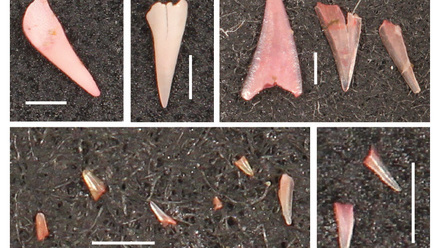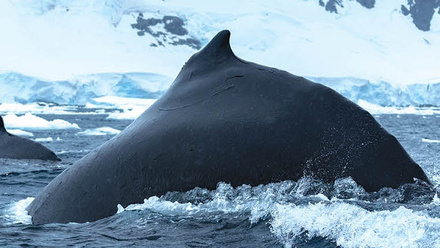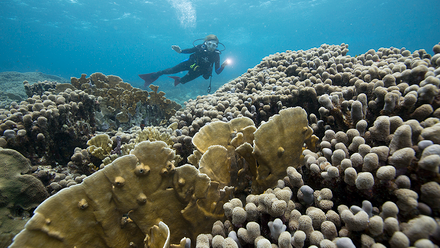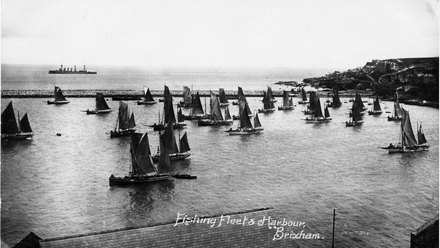Bangladesh’s Bay of Bengal
In the north of the Bay of Bengal—the biggest bay in the world—is Bangladesh. It is a coastal nation with an extremely biodiverse 710 kilometre coastline and home to the longest (125 km) unbroken sea beach in the world: Cox’s Bazar.
Rivers, floodplains, wetlands, mudflats, rocky beaches, coral reefs, and seagrass beds make up the country’s coastal and marine habitats. In the west lies the Sundarbans Reserve Forest, further east is the freshwater and nutrient-rich Meghna deltaic plain, and in the east is the Chittagong Coastal Plain, with rock and reef and less freshwater influence. Further offshore are unexplored deep oceanic waters, and deep-water continental shelf habitats.
The Sundarbans Reserve Forest is located in the Ganges-Brahmaputra delta, where the Ganges, Padma, Brahmaputra, and Meghna rivers converge. At 10,000 km2, it is the biggest continuous halophytic mangrove forest in the world, with 62 per cent of its area located in south-western Bangladesh and the rest in India. Its intricate ecosystem, combining freshwater, estuarine, and marine waters, makes it a unique home for wildlife: fish, sea snakes, whales, sharks, rays, dolphins, corals, marine turtles, seagrasses, and a huge diversity of invertebrates including crabs, shrimps, worms, and molluscs are found here.
These coastal ecosystems provide the bread and butter for the fisherfolk and, in turn, the economy of Bangladesh.
The coastal and marine fisheries of Bangladesh
Bangladesh’s coastal and marine fisheries are complex and heterogeneous. The artisanal and industrial sectors are clearly distinguished from one another. There are currently nearly 68,000 artisanal fishing vessels operating in Bangladesh; in comparison, there were only 5,783 fishing vessels registered in the UK in 2021. About 3 million hilsa (see below) fishers depend on these fisheries, and artisanal fisheries support 12 million people in Bangladesh. Marine fisheries are one of the most crucial sectors in ensuring food security and livelihood for millions of Bangladeshis. Between 2015 and 2016, marine fisheries production was 0.626 million MT contributing 16 per cent of the total fish production of Bangladesh, with a growth rate of nearly 4.5 per cent. A significant amount of unreported catch is made up of subsistence, discarded bycatch, and underreported commercial catch.
Artisanal fisheries (using powered or unpowered fishing vessels) use gears including gillnets and modified gillnets, set-bag nets, longlines, hooks, trawl nets, seine nets, bamboo-set nets, and trammel nets. The hilsa shad (a pelagic, clupeid fish, the national fish of Bangladesh and formerly abundant in the Bay of Bengal) and Bombay duck are single species contributors of the artisanal marine capture. However, there is bycatch of sharks and rays during the fishing season (Fig.1). When all artisanal fisheries are combined, they account for 80 per cent of the shark and ray bycatch in Bangladesh. However, one traditional practice of targeting rays still persists within the artisanal practices. In Bangladesh, the tradition of target ray fishing dates back decades, and fishing techniques have been passed down through generations. During fishing season, 10 to 12 fishers go to sea, for 5 to 7 days. Fish are mostly caught down to 40 m, although deeper areas are also frequented by artisanal fishers.
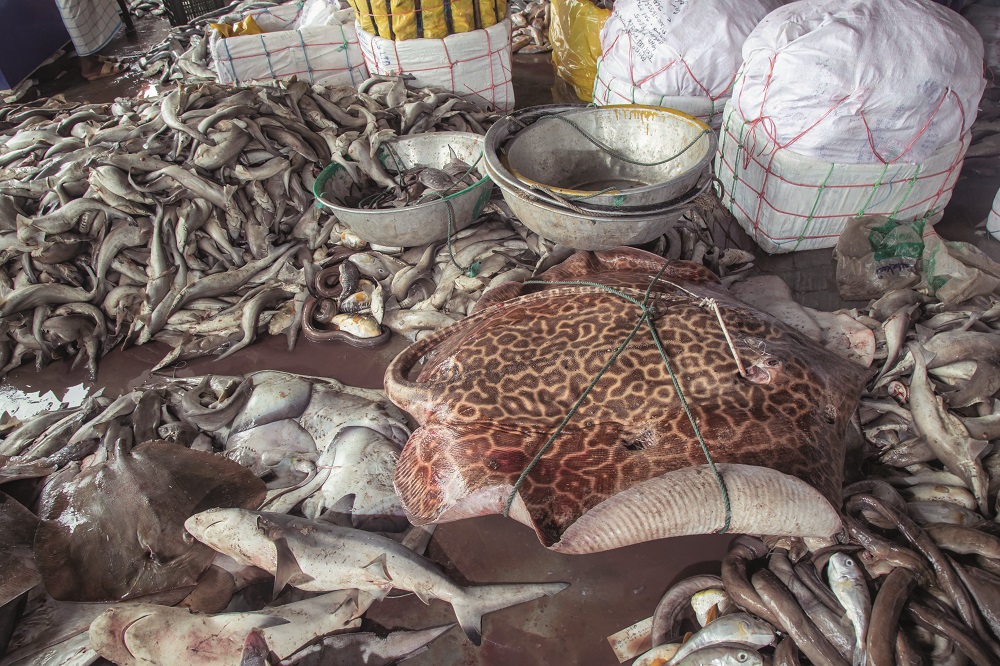
Figure 1 (above). Bycatch of sharks and rays.
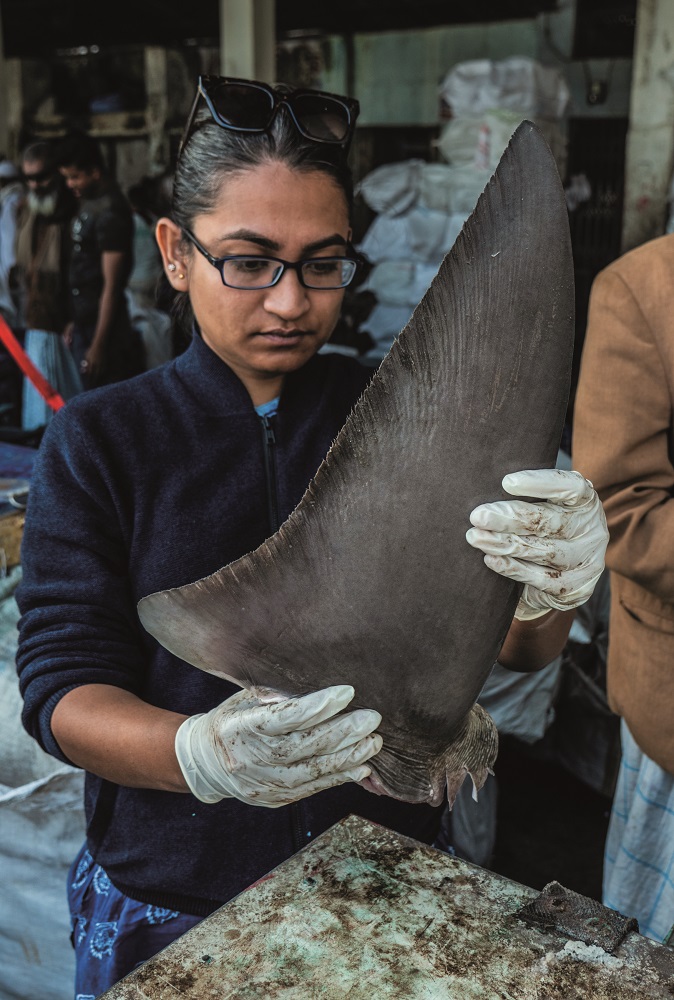
Figure 2 a . The author holding a large pectoral fin. The price of four large dried fins—two pectorals, a first dorsal, and a lower caudal fin—measuring 51 to 66 cm can be as high as $356 and fin sets sell for even more on the international market. Due to the size of the fins and commercial demand, hammerhead sharks, giant carcharhinids, and rhino rays are the most coveted species by traders.
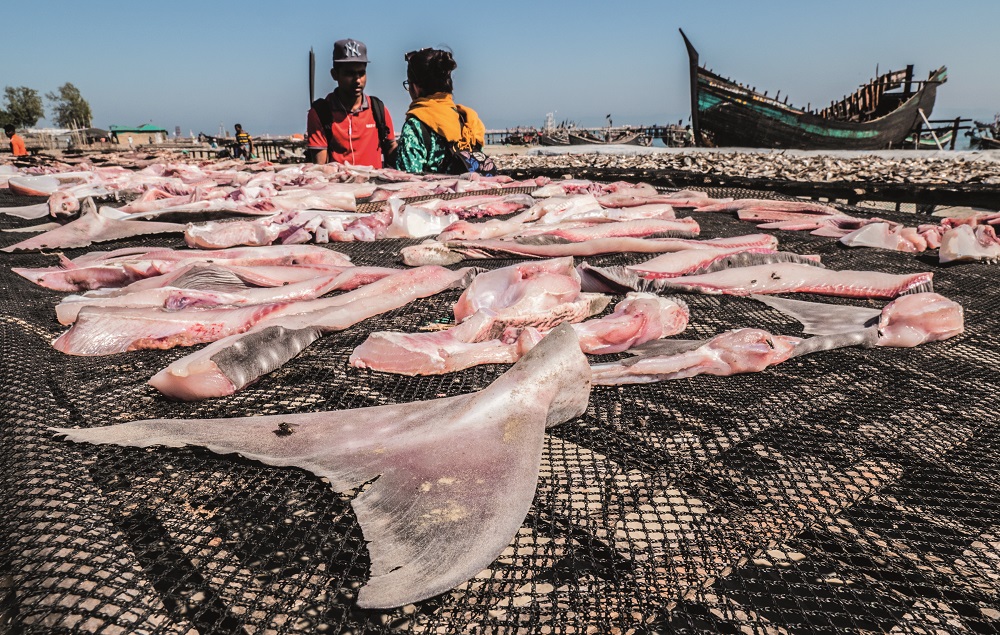
Figure 2 b . Shark fins and meat drying on a rack.
Species and trade: sharks and rays
Unsustainable fishing, fuelled by a growing demand for fins and meat (see Fig. 2), has led to an 80 per cent or more decline of elasmobranchs in some areas of the world. About 37per cent of all elasmobranch species are now threatened with extinction, according to the International Union for Conservation of Nature’s (IUCN) Red List of Threatened Species. Only a handful of nations—including the USA and Australia—manage elasmobranch fisheries responsibly and can be considered exceptions to the norm. Little is known about species-specific management.
Until recently, Bangladesh has had no species-specific data on sharks and rays, and we were unaware of the historical fishing pressure. Our study spanning the last 6 years found that more than 110 shark and ray species were reported from Bangladesh, and they are all susceptible to excessive fishing pressure (Fig. 3). More than 90 species of sharks and rays are protected under the newly amended national law, reflecting an umbrella catch and trade ban on almost all species that are present and frequently entangled in fishing gear. An umbrella embargo on trade is advocated for and implemented in many areas in the global south, but success is limited.
Although considered non-commercial, on average, 4,588 MT of sharks and rays were bycaught and landed between 2005 and 2018. In 2015–16 alone, a very conservative survey revealed 622 MT of sharks and rays were caught by industrial trawlers, 1,920 MT by gill nets, 205 MT by set-bag nets, 1,875 MT by long lines and 4,000 MT by other gears which were not listed.
Fishers
Although millions of fishers depend on marine fisheries and contribute greatly to the GDP, they are one of the most marginalized communities, prone to vulnerabilities such as financial marginalization, natural calamities, no safeguards at sea, and lack of education and healthcare. Of late, they are also blighted by low catches at sea.
‘In the 1990s, we had to come back to shore daily after a fishing trip as we caught more than 2,000 rays in less than 7 days and had no storage capacity. Twenty years ago, a seven-day fishing trip was enough for an entire month’s subsistence for fishers on the boat if we were lucky. Now there are days we don’t even catch a single individual in a week’, said one fisher.
Another fisher mentioned species being lost before they could be recorded and researched by scientists, such as one Critically Endangered wedgefish. He said, ‘Until the 2000s, a species of rhino ray with flower-like spots was caught quite frequently, but we haven’t seen it in the past decade.’ He was talking about a wedgefish species we haven’t recorded in the past 7 years, even after continuous efforts in landing-site data collection.
Fishers are incredibly trusting and hard-working people. They are usually ready to extend help and have been interviewed by many researchers and NGOs for data collection or are listed as so-called ‘beneficiaries’, but there seems to have been some exploitation there too. Fishers do not know how the data will be used and what impact the study may have on their fishing practices. This was apparent in many conversations that we had over the years. Awareness-raising is limited to posters, banners, and top-down meetings, which inherently do not allow true collaboration with fishers. A sudden amendment of a law protecting new species without consulting and facilitating the fishers’ adherence to the regulations will only criminalize them overnight.
Some fishers mentioned, ‘Researchers collect their information and leave. Nothing changes for us. Officials come, and sometimes we oblige, fearing punishment for something we don’t know what to do about, a regulation we don’t know how to adhere to or why.’
Some fishers have lost faith in the system and believe policy-makers do not consider them or their problems: ‘Nobody cares about us. These bans only make our lives harder and no one ever asks what we need to maintain our livelihoods. The minimal compensations are not enough and do not even reach every one of us.’
Due to debt-driven fishing tactics, coastal fishers are very likely to live in poverty all their lives. Most of them lack boats or nets, alternative sources of income, access to effective marketplaces, and tools necessary to follow the rules.
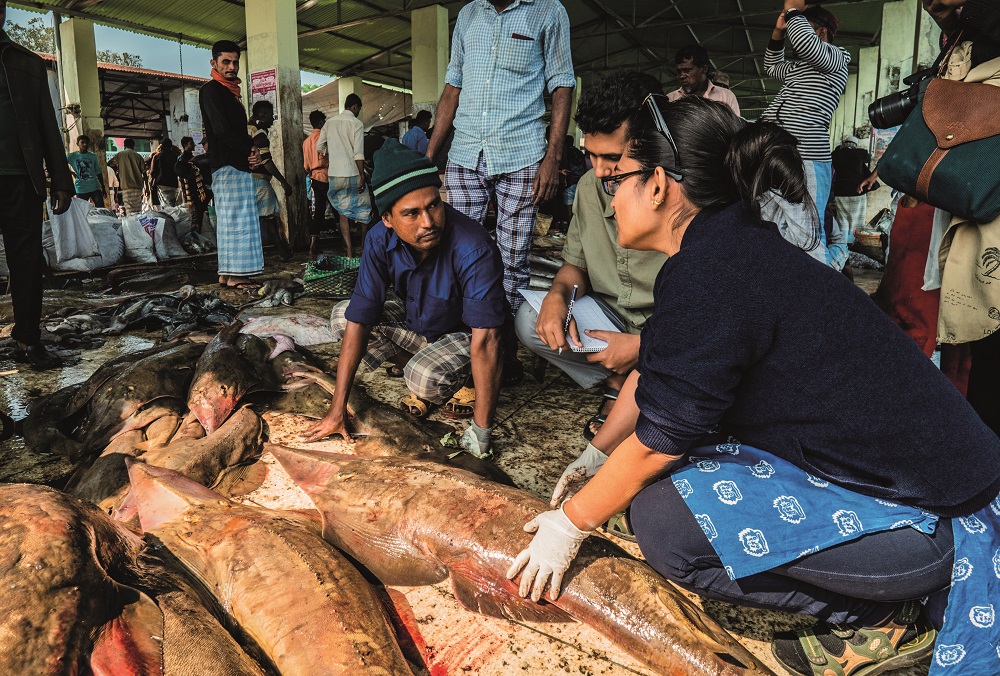
Figure 3 a . The sharpnose guitarfish is a protected species under Bangladesh law.
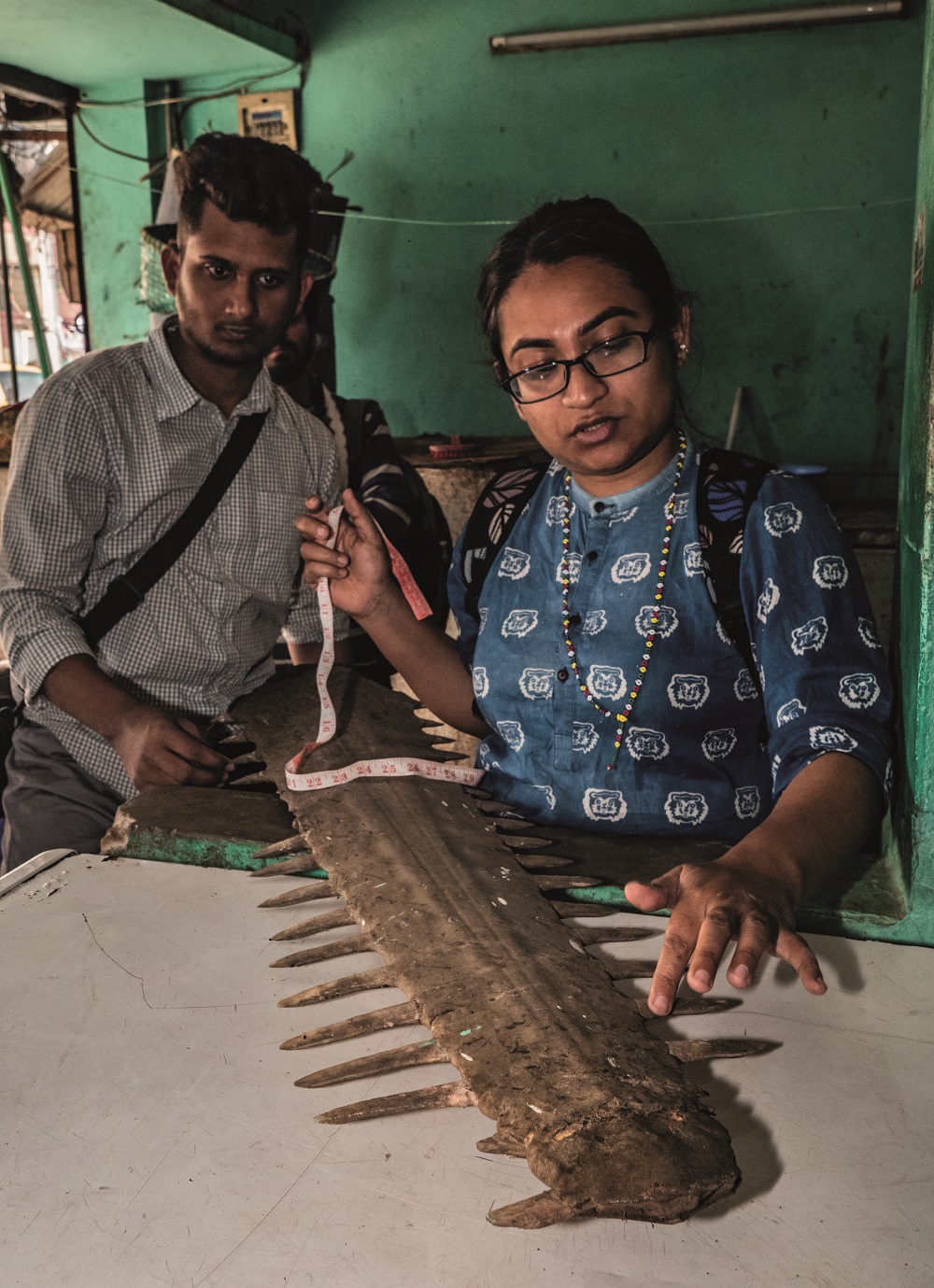
Figure 3 b . Largetooth sawfish rostrum.
Conservation of fish and fishers
The future of sharks and rays is sandwiched between two issues: protecting marine species in their habitats, and safeguarding the wellbeing of fishers who depend on the same fisheries that bycatch sharks and rays. The dilemma is worsened by habitat degradation, climate change, and pollution in nearshore areas that these species prefer.
But bycatch and trade mitigation in a developing country is easier said than done. For starters, tackling bycatch requires a lot of technical facilities, gear modification, and research to drive decisions. Most importantly, a long-term investment towards fishers is needed so they adhere to regulations; if their lost catch is compensated, then the whole process is incentivized. This should also be aided by social and psychological understanding of fishing communities regarding their adoption of these new means.
Moreover, trade is exceptionally complicated, involving many actors with different motivations and varied access to benefits. All these play an important role in the trading process, which is notoriously diverse in different geographic and cultural contexts.
This multifaceted issue dooms any ‘one size fits all’ conservation management measure to failure. A more nuanced approach is needed, where management plans are co-designed with fishers.
In trying to determine bycatch mitigation initiatives, I learned of the fishers’ vulnerabilities, which hindered them from making informed conservation decisions. There is limited political or public interest in establishing better markets that run sustainably and guarantee an equitable opportunity for all fishers.
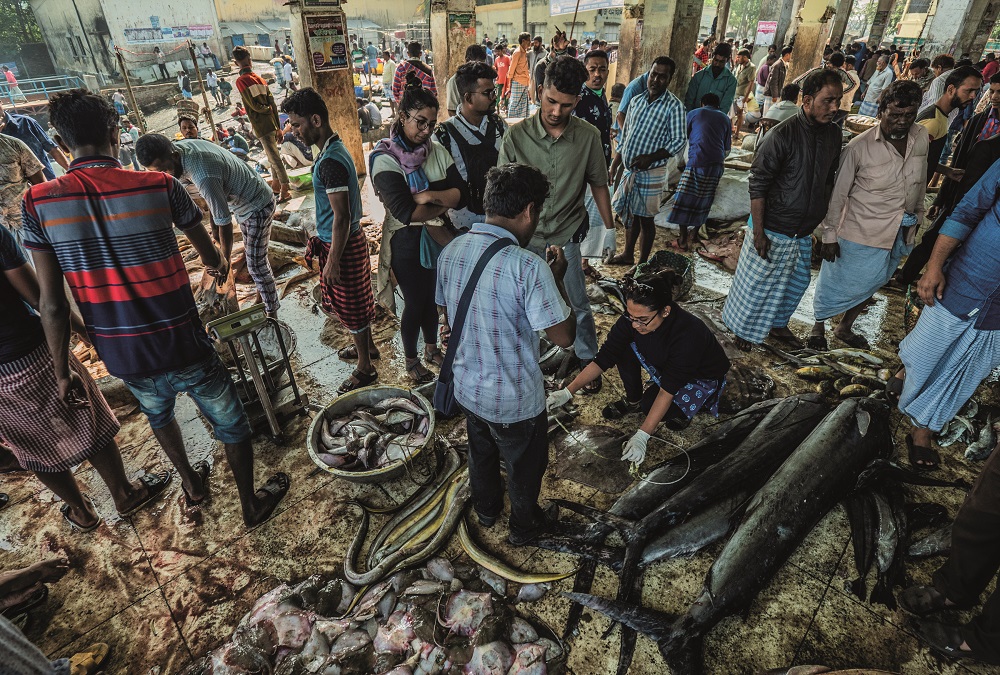
Figure 4. Solutions lie in traditional practices and creating a market where fishers have an equal opportunity to earn from the sustainable catch.
A fair and practical first step towards sustainable fishing and species protection will involve distribution of revenues from sustainable practices to fishers, thus decreasing poverty and ensuring better income. For instance, the fishery for hilsa is Bangladesh’s most significant single-species coastal fishery, providing livelihoods for 500,000 Bangladeshi nationals. The government has invested highly in the sustainable extraction of hilsa. The measures aim to reduce exploitation rates and include limits on exploitation of juvenile fish through a seasonal prohibition on fishing in sanctuary regions and seasonal restrictions elsewhere, fishing gear limits, and specific controls for fishing vessels. Fishing for hilsa is also prohibited at particular times of the year to preserve spawning individuals. Payments for ecosystem services were established to enforce such restrictions. One kilogram of hilsa can be sold for as much as US$30–35 and upwards for larger sizes in the cosmopolitan markets. In a good season, one boat owner can earn up to US$30,000, whereas the fisher employed by the boat owners, working relentlessly in dangerous sea conditions, earns as low as US$30–100 a month. We propose that the huge revenues earned from the hilsa should return to the fishers equally, to improve their livelihoods.
"It is crucial to understand how fishers perceive various species to design targeted conservation actions"
It is crucial to understand how fishers perceive various species to design targeted conservation actions. It is also essential to understand the changing relationship of people, including fishers, with the fish. The point here is that there is a connection between fish and fishers. For instance, fishers identify hilsa as a blessing of the sea and the primary source of their livelihoods. Then there is the belief that manta rays breach as a warning of impending bad weather. Some fishers also believe that the sawfish is vital to the sea as it maintains ecological balance and also cures cancer. These beliefs help us get to know the relationship between the fish and fisher, understand how they value a particular species, and plan accordingly. Fishers’ understanding of the ecosystem services of a species is fascinating and can be crucial in how they will contribute to their conservation.
We conducted a study where we interviewed more than 1,000 fishers and ran over 30 workshops to understand the barriers to releasing a sawfish alive, or what would be acceptable bycatch mitigation strategies. While most would assume loss of income, we found several other reasons that impact a fisher’s decision-making process. For instance, many fishers do not have the authority (in the organogram of the men occupying the boat) to release such a catch and feared they would lose their jobs if they did so. Fishers mentioned that if they released such a catch, then fishers from neighbouring countries would catch them anyway, and why should Bangladeshis suffer the loss when the government does not stop foreign fishers from coming into their waters. When we asked what facilities and incentives they need to release a sawfish alive, to our surprise, they spoke about creating equity in the decision-making process; they talked about initiatives that mitigate danger at sea; for example, communication devices or better working practices. Fishers further said they need to be consulted, respected and not marginalized by regulations. In short, they want to be empowered.
Many older fishers are as troubled as conservationists by decreasing catches and the loss of many charismatic species. It made me understand that it is not a competition between policy-makers and fishers to save these species. Instead, it is a case of striving for a common goal in collaboration.
A number of fishers considered that individual action-based monetary incentives could be unsustainable, as the limited reimbursement does not meaningfully help the fishers. Furthermore, when the project ends, the incentive ends without leaving a legacy for the sustainable practice to be continued. Instead, a solution embedded in the traditional practices and creating a balanced market, where fishers have an equal opportunity to earn from the sustainable catch, is far more practical for the long-term benefit of both the fish and the fisher. Solutions need to be culturally appropriate and co-designed. Nevertheless, global and national strategies to protect small-scale fisheries and marine conservation vary significantly.
Take-away messages
More investment in research is urgently needed to design a sustainable management plan for the elasmobranchs of Bangladesh.
Sustainable conservation must be founded on sound socio-ecological policies that protect fish and fishers. A paradigm shift must take place in marine conservation laws and policies formulated in powerful institutions far from shore. Pre-policy consultations with fishers are crucial to determining the level of acceptability and viability of laws and policies being drafted. This may seem challenging, time- and resource-intensive, but it will be beneficial, as inefficient policies will have more costly and lasting impacts and people tend to follow laws they believe in and have helped create.
The global south needs to lead initiatives that jointly safeguard the future of fish and fishers, a scenario that will require a fundamental ‘behavioural transformation’ in the offices of legislators.
It takes trust, true collaboration, mutual respect, and equal benefit sharing for long-term sustainability of natural resources and conservation of imperilled fauna. I side with both fish and fishers to conserve our marine fauna.
• Alifa B. Haque (alifa.haque@biology.ox.ac.uk; alifa.haque@du.ac.bd)
Doctoral Researcher
NBSI, Department of Biology, University of Oxford.
Also affiliated with British Antarctic Survey.


